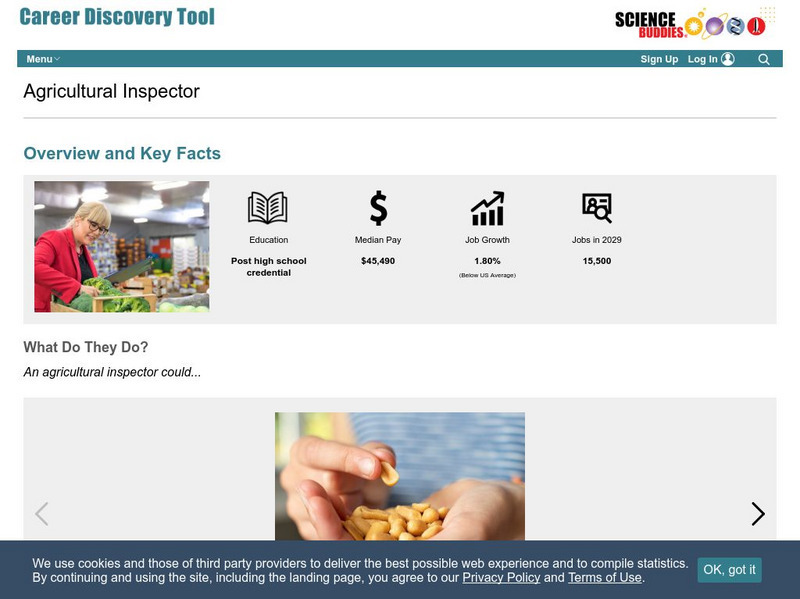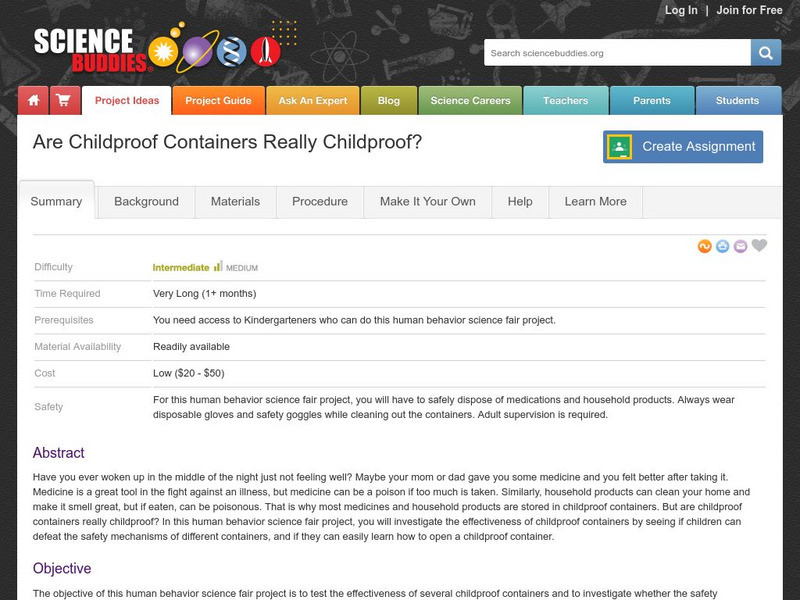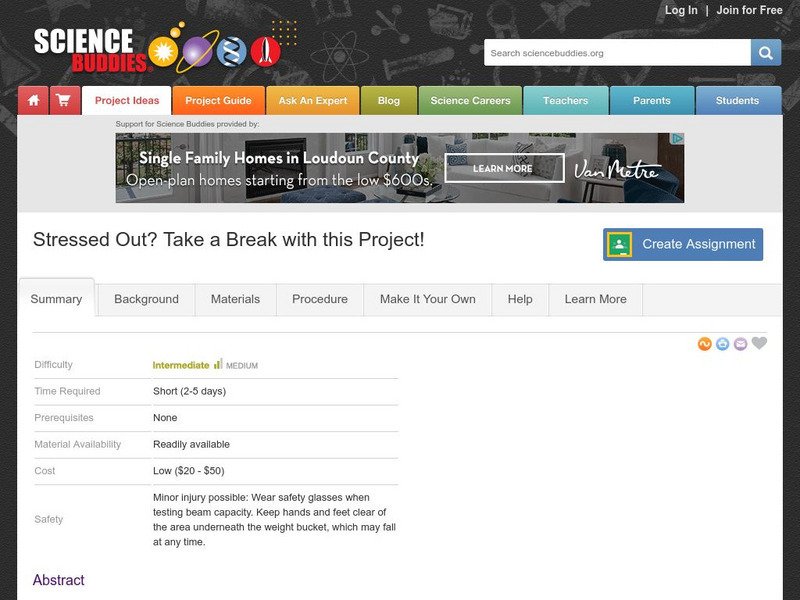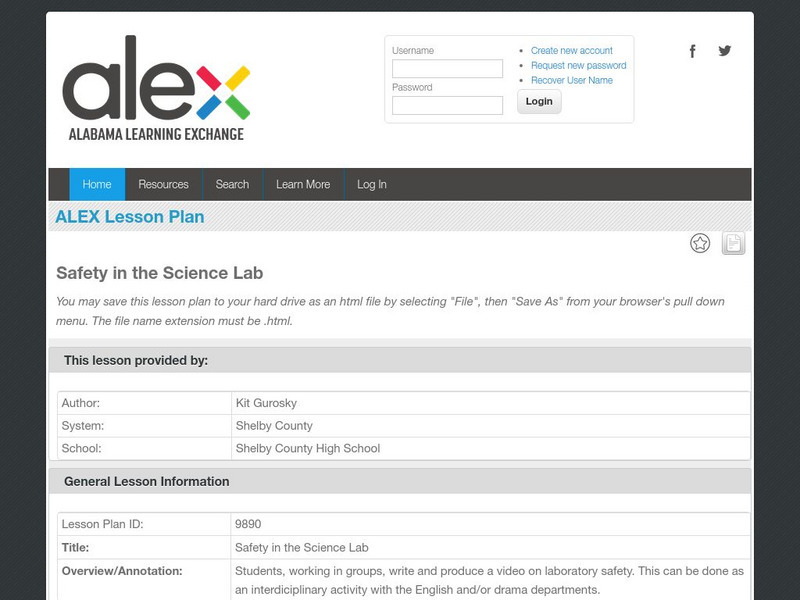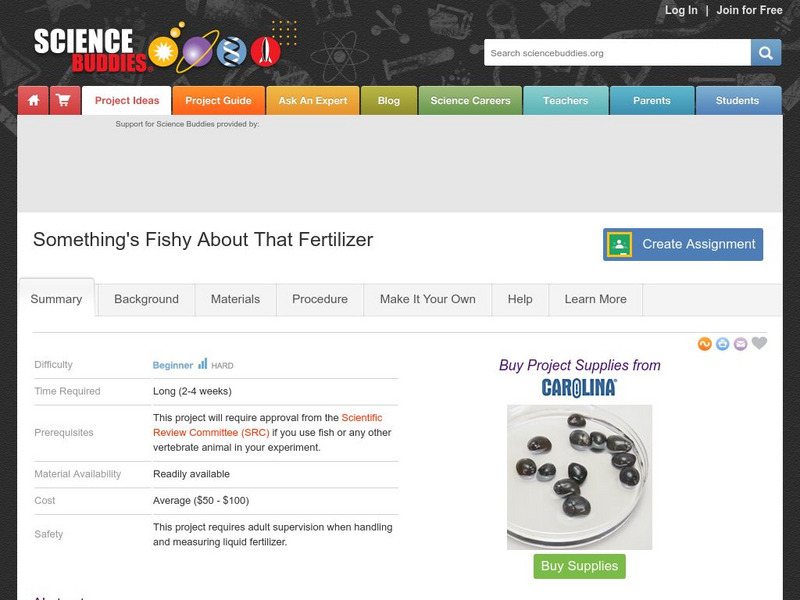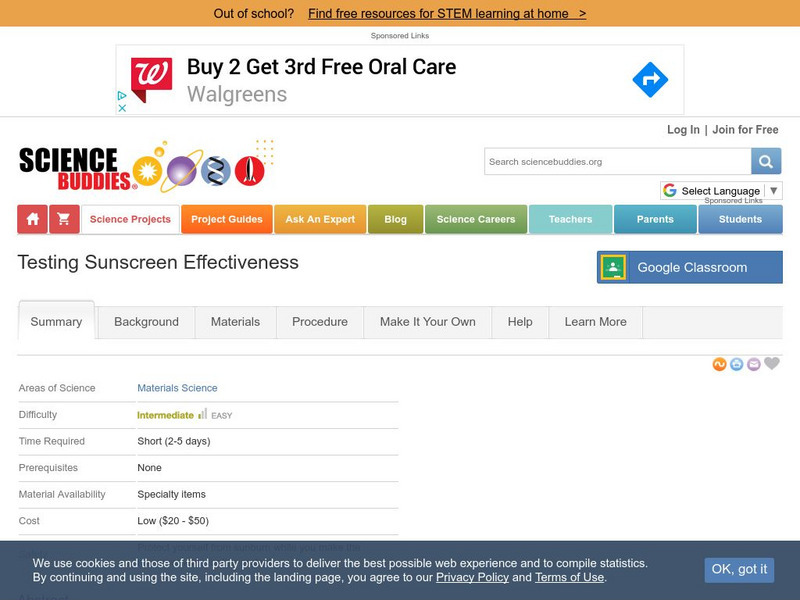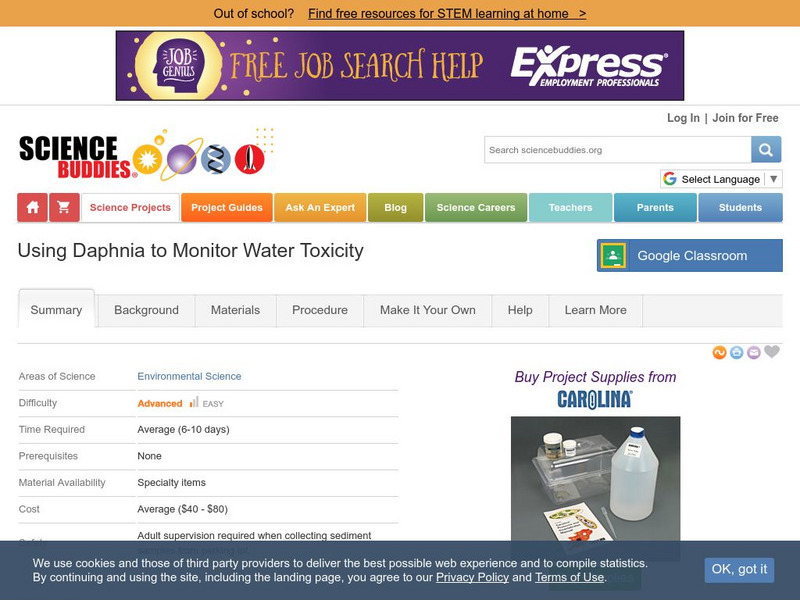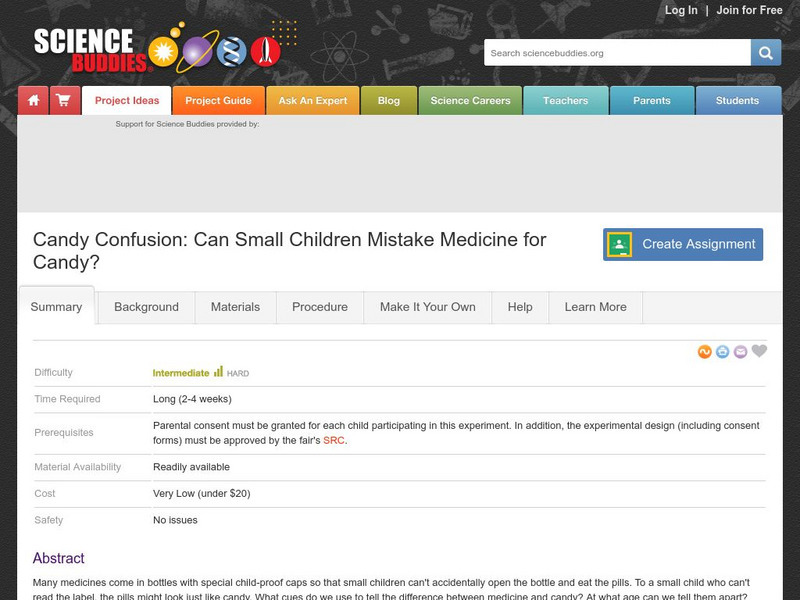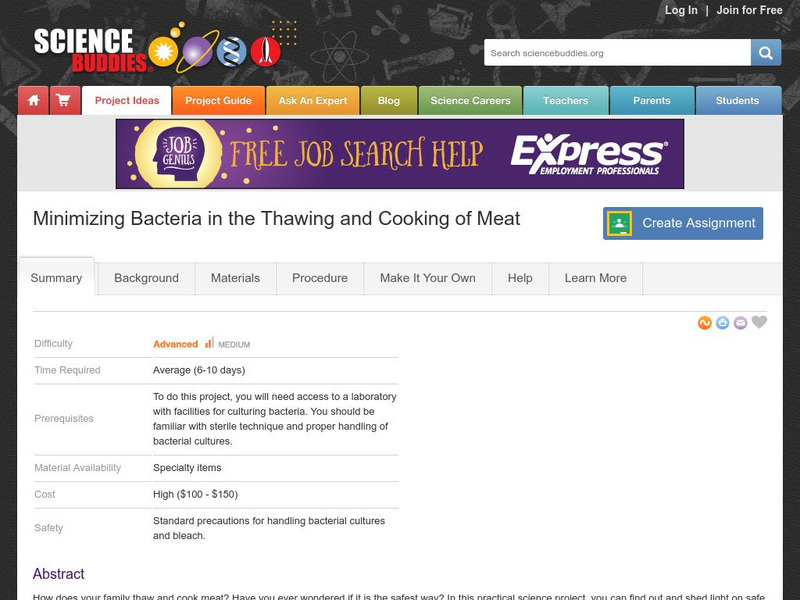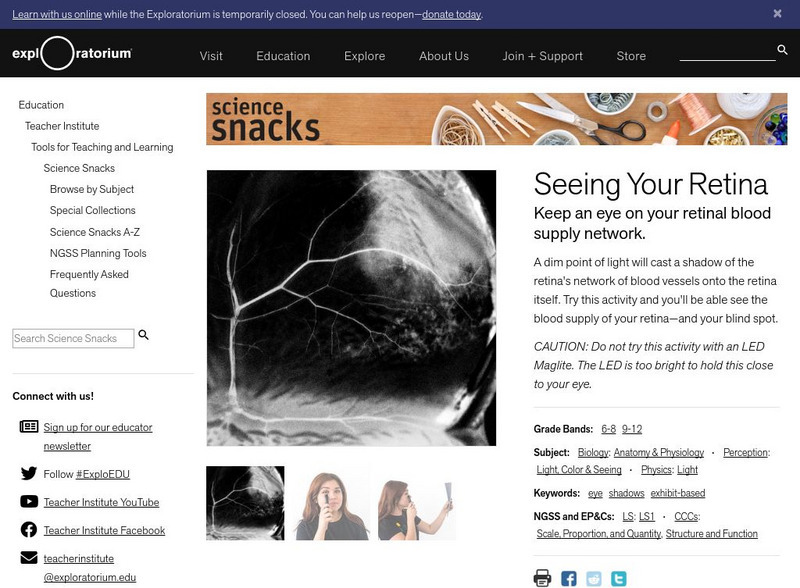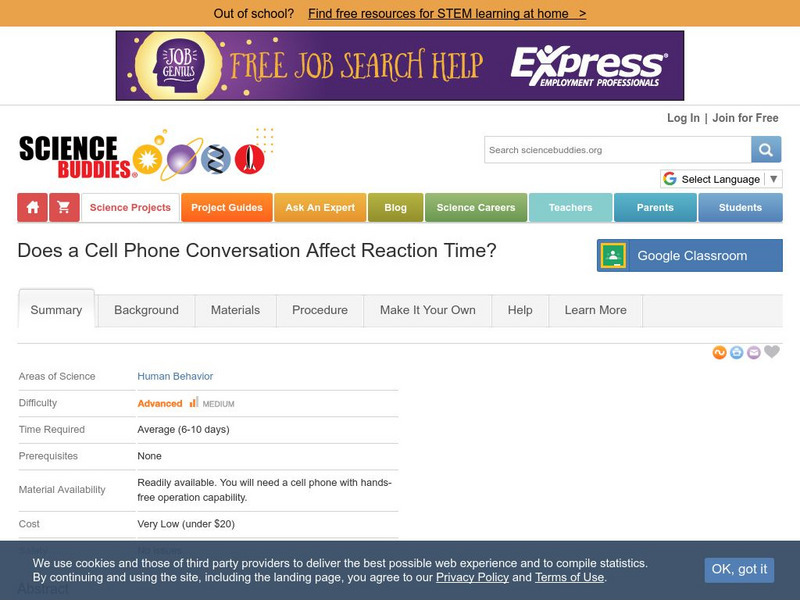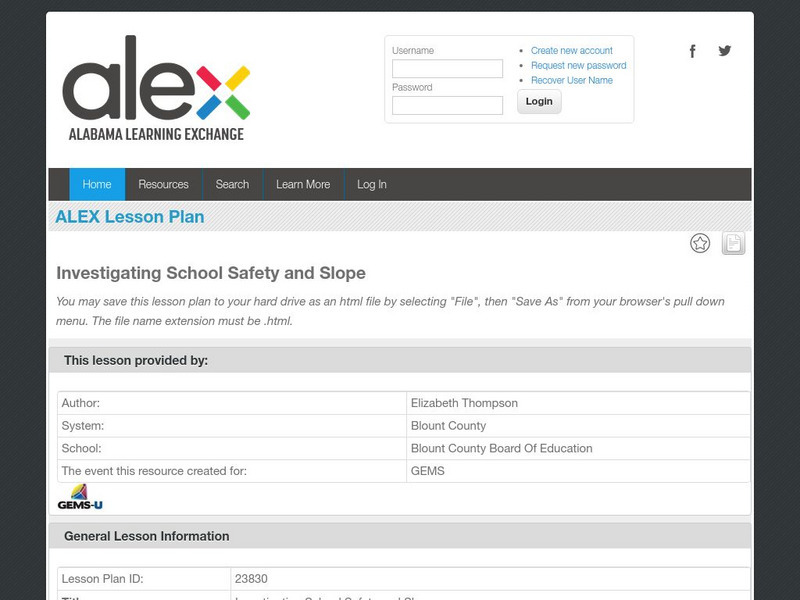Science Buddies
Science Buddies: Science Careers: Industrial Safety and Health Engineer
On the job safety is an important goal for industry. The industrial safety and health engineer is the one responsible for recognizing risks, and developing strategies to address them. This Science Buddies site lays out the requirements...
Science Buddies
Science Buddies: Career Profile: Agricultural Inspector
We all expect that the food we eat is safe. Agricultural inspectors are the ones who check food processors, farms, and businesses to assure that they are following the governmental regulations that protect our food safety. This Science...
Science Buddies
Science Buddies: Project Ideas: Understanding How Food Becomes Rancid
In this cooking and food science fair project, the student will determine how light and air can oxidize fat in potato chips and cause the chips to go rancid. The Science Buddies project ideas are set up consistently beginning with an...
Science Buddies
Science Buddies: Project Ideas: Are Childproof Containers Really Childproof?
In this science fair project, determine if childproof containers are effective and investigate if a child can learn how to open the containers with practice. The Science Buddies project ideas are set up consistently beginning with an...
Science Buddies
Science Buddies: Stressed Out? Take a Break With This Project!
Is an I-beam as strong as a solid beam of the same size? What if you include weight in the comparison: which beam has the greater strength-to-weight ratio? Would an I-beam be stronger than a solid rectangular beam of the same weight?...
Science Buddies
Science Buddies: Solving a 'Windy' Problem
The wind is a powerful force, enough to erode whole hillsides over time. Building structures in windy environments challenge civil engineers with special safety concerns. A wall in a windy area can either shield you from the cold or fall...
CK-12 Foundation
Ck 12: Life Science: 1.7 Safety in the Life Sciences
Review the safety precautions while performing scientific investigations.
CK-12 Foundation
Ck 12: Earth Science: Safety of Water Study Guide
[Free Registration/Login may be required to access all resource tools.] This study guide summarizes key points about water quality. Includes a few questions to check for understanding.
Alabama Learning Exchange
Alex: Safety in the Science Lab
Students, working in groups, write and produce a video on laboratory safety. This can be done as an interdisciplinary activity with the English and/or drama departments.
Science Museum, London
Science Museum Online Stuff: Garrett Morgan
An excellent article about inventor Garrett Morgan including information about his two life-saving inventions: the Safety Hood, an early gas mask, and the traffic light.
Science Buddies
Science Buddies: Something's Fishy About That Fertilizer
Did you know that when you use fertilizer in your garden, it can eventually reach a lake, stream, or pond? There are many different chemicals present in fertilizers. Learn how they affect the aquatic organisms in the ecosystem within...
Science Buddies
Science Buddies: Testing Sunscreen Effectiveness
The goal of this project is to measure the effectiveness of different sunscreen products for blocking ultraviolet-A (UVB) and ultraviolet-B (UVB) rays from sunlight. This project shows you how to use a UV detector to measure rays of light.
Science Buddies
Science Buddies: Using Daphnia to Monitor Water Toxicity
In a bioassay, a living organism serves as a detector for toxins-the same way canaries were used in coal mines to detect invisible toxic gases. In this project, water fleas (Daphnia magna), a freshwater crustacean, are used in a bioassay...
Science Buddies
Science Buddies: Candy Confusion: Can Small Children Mistake Medicine for Candy?
Many medicines come in bottles with special child-proof caps so that small children can't accidentally open the bottle and eat the pills. To a small child who can't read the label, the pills might look just like candy. This project helps...
Science Buddies
Science Buddies: Minimizing Bacteria in the Thawing and Cooking of Meat
Here's a practical project that sheds light on safe practices in the kitchen. Use this information to determine which method of defrosting meat is safest and which method of cooking kills the most bacteria.
Other
National Nuclear Science Week
Here's a site dedicated to National Nuclear Science Week, Jan. 23-27, 2012. Sponsored by the National Museum of Nuclear Science & History, this special week is focused on all parts of nuclear science. You can find activities, lesson...
Exploratorium
Exploratorium: Science Snacks: Seeing Your Retina
Try this experiment where you examine the blood vessel network of your retina and the eye's blind spot. Includes a safety precaution.
Science Buddies
Science Buddies: Does a Cell Phone Conversation Affect Reaction Time?
Does talking on a cell phone make one a more dangerous driver? Here is an experiment you can do to investigate whether reaction time is adversely affected by a simultaneous phone conversation.
Science Struck
Science Struck: Working of a Fusible Plug
Explains how the fusible plug in a steam engine works and why it is essential for safety reasons.
Science Struck
Science Struck: Uses of Crucible Tongs
Discusses what tongs are used for and why crucible tongs are a very important tool in a laboratory and other settings. Describes the different types of crucible tongs, their uses, and some safety tips.
Alabama Learning Exchange
Alex: Investigating School Safety and Slope
Using a 'news report' approach, young scholars investigate the slope of various stairways on the school campus and report on wheelchair accessibility and adherence to the Americans with Disabilities Act. (PowerPoint Included) An...
Science Struck
Science Struck: Dry Ice vs. Liquid Nitrogen Explore the Differences
Explains the differences between dry ice and liquid nitrogen, what each is used for, and safety recommendations.
Other
Nutrition Action: Water, Water, Everywhere
The Center for Science in the Public Interest offers a discussion of contaminants that can be found in tap water and chemicals added to water in the public water systems. The topics discussed are arsenic, parasites, lead, turbidity, and...
Michigan State University
Michigan State University: Environmental Health & Safety: Ernest Rutherford
A clear telling of Rutherford's place in the history of human understanding of radiation.
Other popular searches
- Science Safety Symbols
- Science Lab Safety Rules
- Science Safety Rules
- Physical Science Lab Safety
- Teaching Science Lab Safety
- Power Point Science Safety
- Science Safety Worksheets
- Science Safety Procedures
- Science Safety Lessons
- Science Safety Game
- Science Lab Safety Symbols
- Science Safety Guidelines

